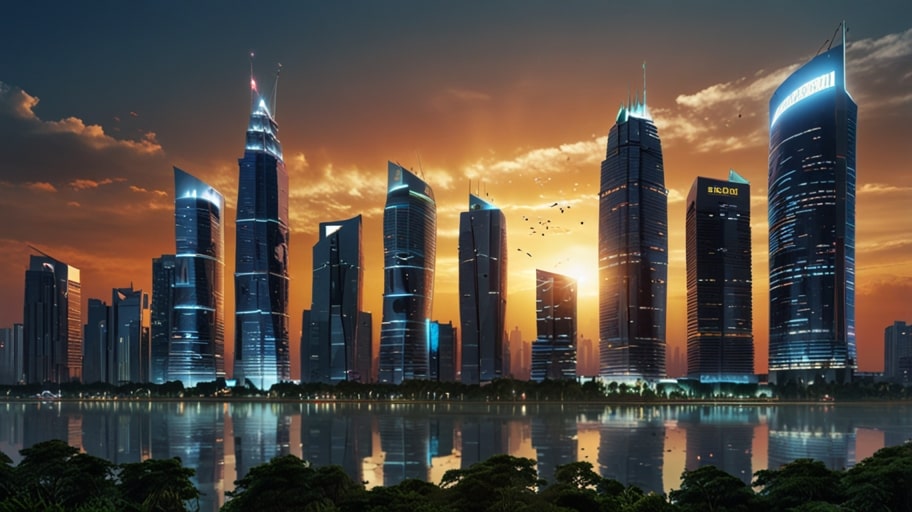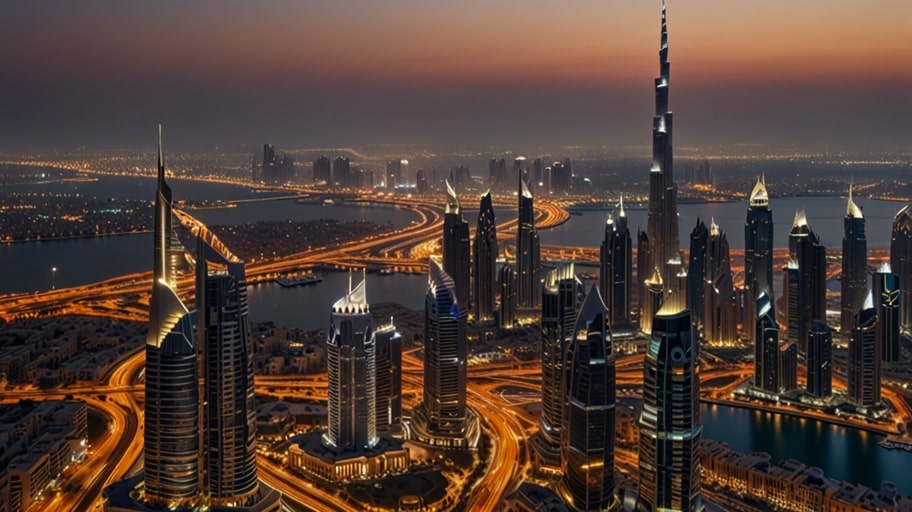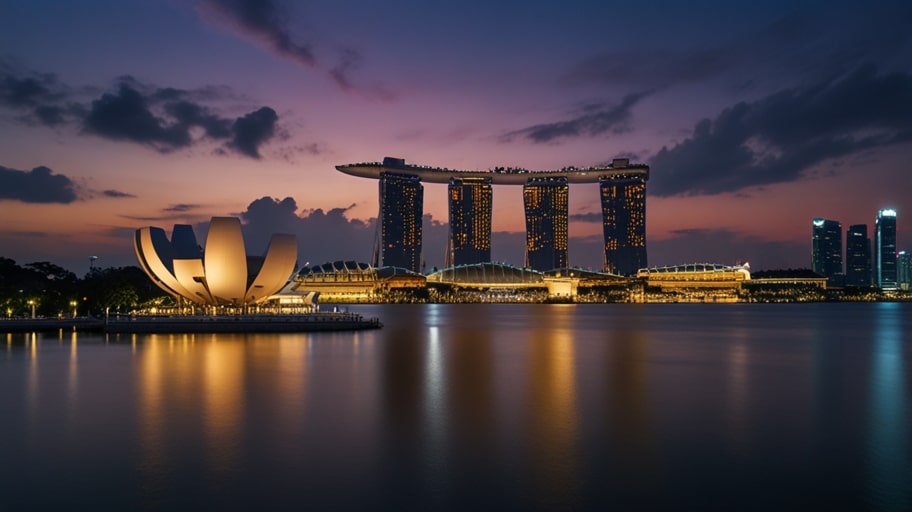Bangkok saw a surge of cash infusion from international investors who put their money into the logistics sector for e-commerce warehouses. The young, tech-savvy population of Thailand, which has given rise to rapid online retail growth, has really put this country at the top of investors’ favorite destinations.
The fact that the country is in a strategic location has become an additional reason for investment attractiveness in supply chain modernization.
Singapore experienced the wind of the clean energy market as the flow of global funds was directed to offshore wind projects. The government initiatives and the sustained effort to have a carbon-neutral effect attracted tens of billions. The advanced infrastructure and the regulatory clarity that Singapore provides make it a model of sustainability amid investment throughout the region.
In Jakarta, real estate funds boomed, as they were invested in affordable housing that arose as a result of rising urbanization and government allowances.
With Indonesia’s middle class growing, the government’s incentives and the achievable output are things to keep in mind while staying dynamic. You will find no trouble identifying a middle-class consumer and maintaining your gain in the market, with the family’s purchasing power increasing significantly.
Kuala Lumpur’s start-ups in Artificial Intelligence have managed to finalize and attract a record amount of venture capital. The new markets and industries that have become the fastest-growing are the staff-related part of Fintech and the digital transformation of the healthcare sector, which attracted the investors’ foundation interests.
Based on the country’s new policies that will drive the local digital economy and Malaysia’s talent pool, the investors expect a high probability of delivering very strong value.
In Manila, infrastructure bonds for mass transit systems got oversubscribed to a great extent. At the same time, plans to modernize the government, together with the urban congestion issue, were the impetus for the investment in the railways and the bus networks. The bright spot of the Philippines’ economy and an expanding population still continue to make a reliable and potential long-term capital city.
Hanoi stood out in the production field, managing to attract substantial European and Japanese funds. On the investment trend lists, the champions were electronics and textile factories, which benefited from low labor costs.
The outstanding features of this country’s industrial embrace, such as the companies’ international trade deals, particularly in exports, and its strong bargaining position in those arenas, continue to empower it to become a global manufacturing hub.
Microfinance institutions in Phnom Penh were beneficiaries of a large sum of funding aimed at serving small businesses. Farmers, particularly those in the countryside and in agriculture, have been given the opportunity to grow their business thanks to credit access that has been extended. The growth of Cambodia followed by the pro-business approach has encouraged international investors to explore markets that were previously not served.
Among the initiatives in the renewable energy sector in Yangon that have gained attention are those catalyzed by green funds from Asia. Consequently, the projects of setting up solar panels and constructing power dams have successfully raised the necessary investments from deals that amounted to millions of dollars, thereby helping to satisfy the energy demand of Myanmar. The rich natural resources, together with the reforms that are taking place slowly but surely, are starting to reshape investor confidence in the country.
It was the private equity companies in Ho Chi Minh City who had set their sights on the food and beverage startups as the target of their investments. Moreover, those companies that were producing plant-based goods and those brands that had gone organic led this revolution, and it was a sign that consumer behaviors were changing.
Vietnam, with its exciting range of local dishes and the opportunity to export food products, makes this country a hot spot in the eyes of global investors.
The petrochemical industry in Brunei witnessed an increase in the number of foreign investors not long ago. It is estimated that process ‘n’ refineries will be among the new refining facilities that the Middle East investors will develop and they are expected to contribute positively to the current export figures. Unlike the oil markets that are now quite shaky, the economy in Brunei is proven to be sturdy while the country’s oil wells still attract global capital.
Even though the investments in the tourist sector were modest, they showed little walking, the push of ongoing developments, and the investors’ determination to chase greater tourism opportunities.
The projects for the construction of green hotels and the restoration of the cultural heritage of the country secured the top two spots on the list of the most funded projects. The saying that Laos has a lot of attractions that have hardly been touched and its good position in the region are beginning to get the attention of the whole world.
In Dili, financial support was obtained by agri-ventures for the eco-friendly production of coffee as well as of spices. Surprisingly, it was the support that came from Australian and Southeast Asian countries that managed to convince the cooperatives of the small farmers in East Timor to venture on, as they had set their eyes on the export markets. At the same time, the fertile lands of East Timor and its trade agreements are seen as the most potential sources of income for the agricultural sector.
Singapore’s water region captivated finances on green vehicles, while electric ferries and low-emission cargo ships became vessels to receive vanity and pride among environmentalists. The city that serves as a hub for shipping is the main driver of maritime innovation, which inspires investors to invest in new technologies.
The healthtech startups in Bangkok were the main ones that scored the biggest wins regarding funds raised for telemedicine platforms. This is largely due to an increased demand for remote healthcare initiatives in response to the growth of urban areas.
Additionally, the emerging digital infrastructure, as well as technological health services, have attracted foreign investors and international patients, thus boosting the country’s status as a hub of technology.
The capital of Indonesia turned its creative businesses into the focal point for venture capitalists that are seeking to promote their brands through digital media. Streaming platforms and gaming studios drove the increase in capital, using young Indonesians as the target population. Moreover, it is the cultural coexistence and the high penetration of mobile devices that have made the country an indispensable part of the digital entertainment landscape.
The starting of green projects in Kuala Lumpur’s urban area via green bonds was possible due to the substantial involvement of European investors in projects that had telemetry and smart grids, thus aligning with the country’s green goals. Malaysia’s strong support to urban planning that is environmentally friendly has gradually reshaped its future investments toward clean energy and less pollution.
It was the Manila renewable power sector that engaged in a successful initiative of fundraising for the geothermal projects. American and Japanese collaborators provided the lifeblood and significant support in exploiting the geothermal potential of the country. The country’s efforts to be independent in its quest for energy and having natural resources have ranked it as the leader in renewable energy sectors.
The successful startup of fintech in Hanoi with its focus on mobile payments had a significant increase in the flow of capital. This gain was due to the cashless economy and the increased usage of smartphones in Vietnam that had been driving the investors’ interest. It is regulatory reform and the country’s large number of technology experts that have cemented the top spot for Vietnam as far as fintech is concerned.
Investors who are concerned about the ethical treatment of workers are showing interest in Phnom Penh’s garment industry. The European savers and new fashion companies that implement this approach and keep it alive are becoming more and more pronounced.
Enterprises in Thailand that are producing labor-intensive goods and at the same time improving labor standards are the main driving force behind investment in Cambodia that is “green” and socially conscious.
In Yangon, education technology startups received lower than expected investments. Digital learning platforms, especially for the underprivileged rural students who are inadequately served in the region, have been one area that has grasped the opportunity of the times.
Although it is no easy task for the youthful population and digitalization itself to be able to captivate investors who lean toward technology as the main focus, progress is gradually being made in Myanmar.




